Janmashtami, also known as Krishna Janmashtami, is a significant festival in Hinduism that celebrates the birth of Lord Krishna. Observed by millions of devotees across the world, this auspicious occasion holds deep spiritual and cultural importance. The festival falls on the eighth day (Ashtami) of the Krishna Paksha (dark fortnight) in the month of Bhadrapada, according to the Hindu lunar calendar. In 2023, Janmashtami is anticipated to be an occasion filled with joy and devotion.
Janmashtami holds immense significance in Hindu mythology and is celebrated with great enthusiasm in many parts of India and around the globe. It commemorates the divine incarnation of Lord Vishnu as Lord Krishna, who played a vital role in establishing righteousness and promoting love and compassion among humankind. This festival not only marks the birth of a revered deity but also serves as a reminder for devotees to embrace Krishna’s teachings and emulate his virtues.
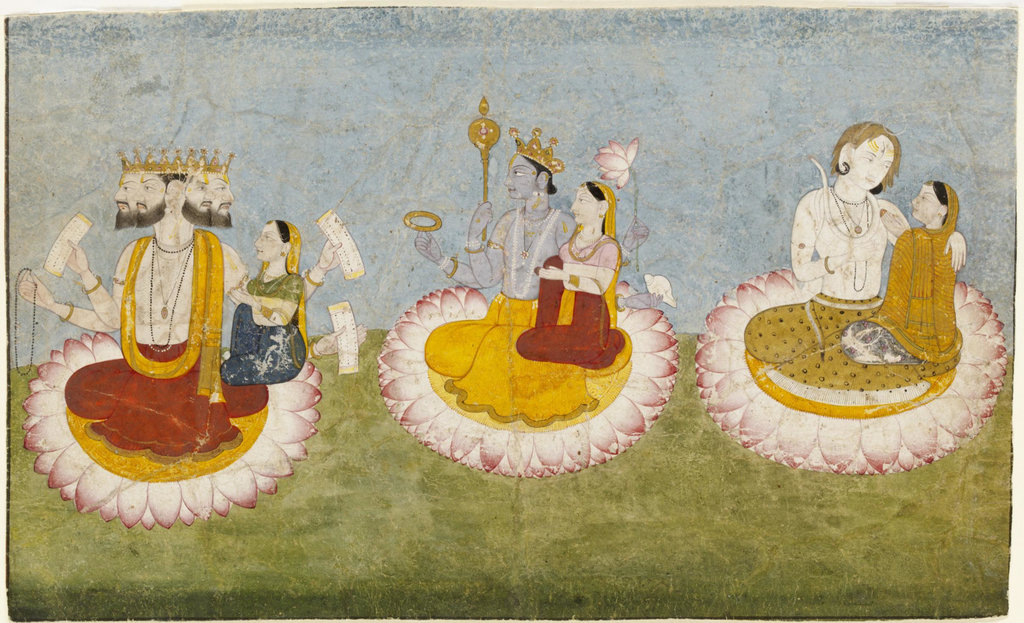
The origins of Janmashtami date back thousands of years ago, when Lord Krishna was born in Mathura amidst challenging circumstances. The celebration encompasses various rituals, symbolic traditions, and mythological stories and shows profound reverence for both Lord Krishna and Lord Vishnu. Devotees engage in fasting practices, puja ceremonies, singing devotional songs, storytelling sessions about Krishna’s life experiences, and participate in vibrant cultural performances such as Dahi Handi.
The captivating legend of Lord Krishna is closely intertwined with Janmashtami. As per ancient scriptures like the Bhagavad Gita and Mahabharata, Lord Krishna emerged as a pivotal figure during times of distress when evil prevailed over righteousness. His divine actions left an indelible mark on humanity as he dispelled darkness with his wisdom and established a path towards liberation.
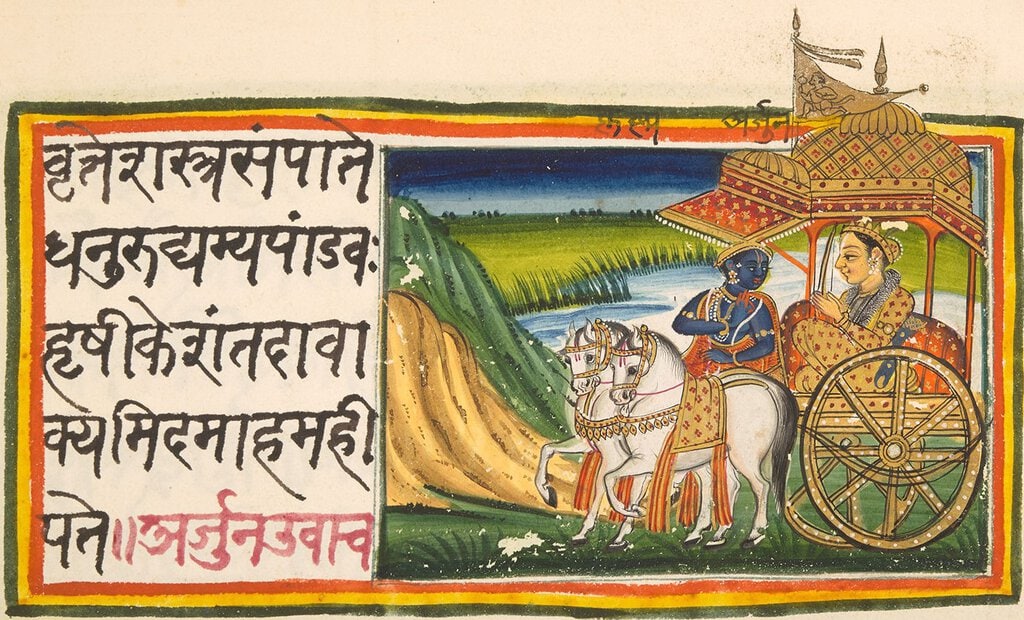
Symbolically representing divine love, compassion, knowledge, playfulness, righteousness, and universal harmony, Lord Krishna personifies various ideals. Janmashtami serves as an occasion to delve into the profound symbolism embodied by Lord Krishna and understand its relevance in our lives. It instils devotion, introspection, and a deep connection with the spiritual realm.
The festival of Janmashtami is devotedly observed with various rituals and traditions that vary across different regions. Devotees observe fasts from sunrise to midnight (the time when Lord Krishna is believed to have been born) and break their fast only after performing the puja at an appropriate time. Elaborate arrangements are made for decorating temples, creating beautiful sanctuaries for baby Krishna idols, and offering special bhoga (food) to please the deity.
Janmashtami celebrations also involve vibrant cultural performances such as Raas Leela (dance dramas), where devotees enact episodes from Lord Krishna’s childhood and portray his divine playfulness and charm. Another significant highlight is the Dahi Handi celebration, where human pyramids are formed to reach and break clay pots filled with curd, signifying the playful nature of young Lord Krishna.
Janmashtami not only unifies Hindu communities but also transcends religious boundaries, attracting people from diverse backgrounds who join together in celebration. The festival has gained global prominence over the years, with devotees observing it in countries like Nepal, Bangladesh, Pakistan, Malaysia, Singapore, the United States, and the United Kingdom, among others.
As we eagerly await Janmashtami, it is essential to understand the significance of this auspicious festival in Hinduism and its anticipated festivities. This article will explore in detail the origins of Janmashtami and its links to Lord Krishna and Vishnu through mythology and legends associated with this sacred occasion. It will delve into the symbolism of Lord Krishna and shed light on various rituals observed during Janmashtami.
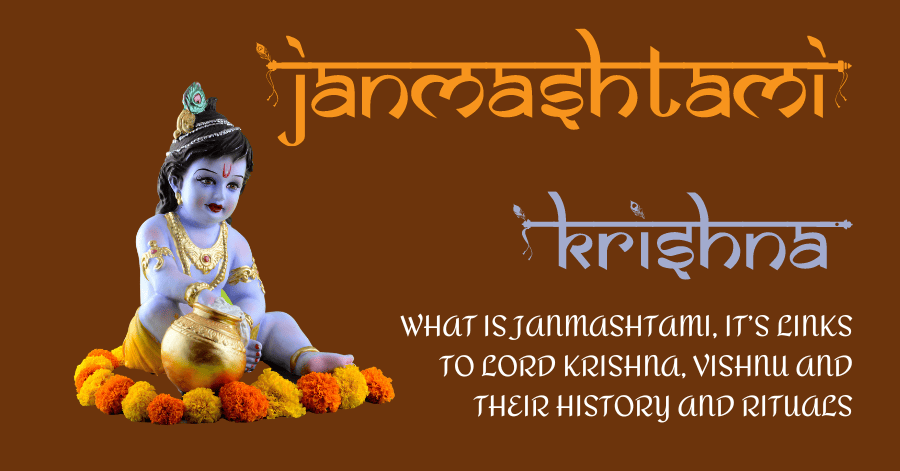
Additionally, it will provide a guide to fasting practices followed by devotees on this holy day, along with the auspicious puja and aarti ceremonies. Furthermore, it will highlight the enthusiasm surrounding Dahi Handi celebrations worldwide and the unifying spirit of Janmashtami that transcends borders and connects people across cultures.
The History and Origins of Janmashtami
Janmashtami, one of the most significant festivals in Hinduism, celebrates the birth of Lord Krishna, an incarnation of Lord Vishnu. This section will delve into the history and origins of Janmashtami, shedding light on how this auspicious festival came into existence.
Historical Background
The origins of Janmashtami can be traced back to ancient times. It is believed that this sacred festival was first celebrated around 5,000 years ago. The exact date of its inception is uncertain; however, it is commonly associated with the Dwapara Yuga, a period in Hindu mythology characterized by numerous divine incarnations.
During this era, Lord Krishna incarnated to rid the world of evil forces and establish righteousness and dharma. His birth not only marked a significant event in history but also laid the foundation for the subsequent celebrations of Janmashtami.
Influence of Bhagavata Purana
The Bhagavata Purana, a sacred text in Hinduism that narrates the story of Lord Krishna’s life and teachings, plays a crucial role in understanding the historical significance of Janmashtami. It provides a detailed account of Krishna’s birth and the circumstances surrounding it.
According to this scripture, Krishna was born in Mathura to Devaki and Vasudeva on the eighth day (Ashtami) of the dark fortnight (Krishna Paksha) in the month of Bhadrapada. As part of a divine plan to protect him from his wicked uncle Kamsa, Vasudeva carried baby Krishna across the Yamuna River to Gokul, where he was raised by Yashoda and Nanda.
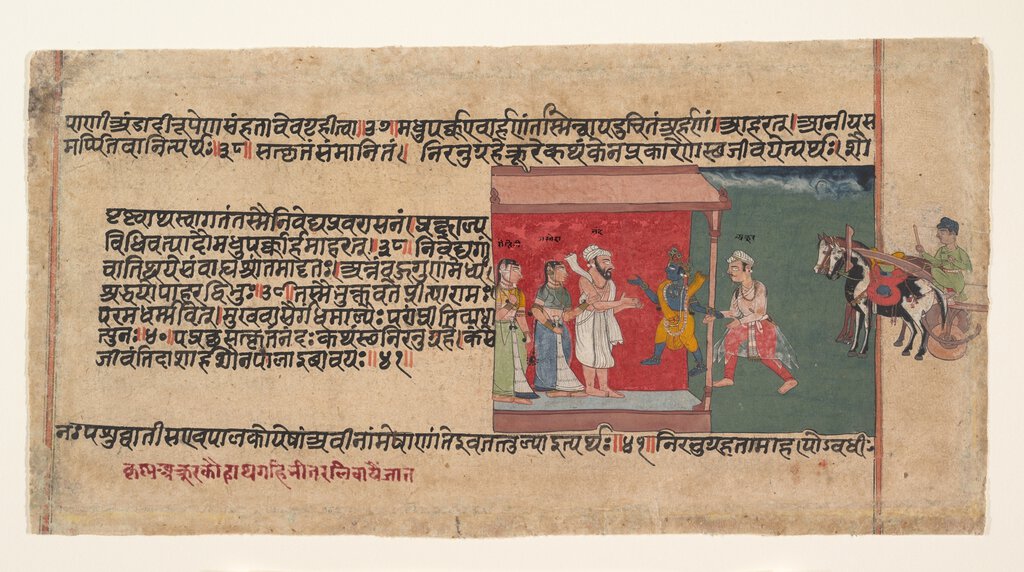
The Cultural Influence
Over time, Janmashtami evolved as more than just a religious observance. It became an integral part of Indian culture and heritage due to Lord Krishna’s immense influence on every aspect of life. His divine presence is not only worshipped but also celebrated through music, dance, drama, and various art forms during the festival.
For those interested in higher teachings and interpretations of playing dice as the World as a Theater, see our article “The Divine Game of Playing Cards” (The Higher Sense of the Tarot) in the Templakey magazine issue 5 [October 2022].
For the first time in Tarot history, we give you comparative teaching regarding Tarot cards and the illusion of the world as the “Theatrum Mundi”. Also, see Templakey magazine issue 2 [January 2022] for Tarot related articles.
The festivities vary across regions in India, incorporating local traditions and customs. This cultural diversity further adds to the richness and vibrancy of Janmashtami celebrations, making it a unifying force for people from different states and communities.
![What Is Janmashtami, It’s Links To Lord Krishna, Vishnu, And Their History And Rituals Issue 2 [january 2022] of the templarkey magazine](https://templarkey.com/wp-content/uploads/2022/05/ISSN-Issue-2-TEMPLARKEY-Magazine-NEW.png)
Spread Beyond Borders
Not confined to India alone, Janmashtami has gained popularity worldwide due to the Indian diaspora and the widespread practice of Hinduism. In countries like Nepal, Bangladesh, Fiji, and Mauritius, where significant Hindu populations exist, Janmashtami is observed with great enthusiasm.
Furthermore, with the advent of globalization and increased cross-cultural interaction, the spiritual significance of Janmashtami has transcended geographical boundaries. It has become an occasion where people from diverse backgrounds come together to celebrate unity, devotion, and the eternal teachings of Lord Krishna.
Preservation of Traditions
Regardless of its historical origins or cultural influences, Janmashtami remains a cherished festival that nurtures faith and religious fervour among devotees worldwide. Through generations of observance and adherence to rituals handed down over centuries, this auspicious occasion continues to thrive as a symbol of spiritual enlightenment and unconditional devotion towards Lord Krishna.
The Legend of Lord Krishna and its Connection to Janmashtami
Janmashtami, the auspicious Hindu festival, holds a deep connection to the mythological stories and legends of Lord Krishna. He is revered as an incarnation of Lord Vishnu and played a significant role in shaping the cultural and religious landscape of India. This section delves into the legend of Lord Krishna and its close association with Janmashtami.
One of the most well-known and cherished stories surrounding Lord Krishna is his birth. According to Hindu mythology, he was born on the eighth day (Ashtami) of the month of Bhadrapada. His birth took place in Mathura to Devaki and Vasudeva, who were imprisoned by Devaki’s brother, King Kamsa. It is said that celestial voices foretold Kamsa’s downfall at the hands of Devaki’s eighth child.
In order to protect Lord Krishna from Kamsa’s wrath, on the night of his birth, Vasudeva carried him across the river Yamuna to Gokul, where he was placed under foster care with Yashoda and Nanda. This incident symbolizes divine intervention and illustrates how Lord Krishna’s life was filled with miraculous events right from his infancy.
Another quintessential episode associated with Lord Krishna is his playfulness as a child. He would often engage in mischievous acts such as stealing butter from neighbouring houses or charmingly breaking pots filled with curd. These playful escapades symbolize the joyful nature and playful spirit of Lord Krishna.
Furthermore, Janmashtami also commemorates various heroic feats accomplished by Lord Krishna throughout his life. One such remarkable event is His victory over demons like Putana and Trinavarta during His childhood. The celebration serves as an opportunity for devotees to remember these tales of valour that highlight Lord Krishna’s divine powers.
The connection between Janmashtami and these mythological stories goes beyond mere entertainment or devotion; they carry great spiritual significance. These stories symbolize the triumph of good over evil and the importance of righteousness and devotion. They inspire devotees to embrace Lord Krishna’s divine qualities, such as love, compassion, and devotion in their own lives.
Exploring the Mythological Stories Associated with Janmashtami
Janmashtami is a Hindu festival that celebrates the birth of Lord Krishna, one of the most revered deities in Hinduism. This section will delve into the various mythological stories associated with Janmashtami, highlighting the significance and symbolism behind these narratives.
One of the most well-known stories linked to Janmashtami is that of Devaki and Vasudeva, the parents of Lord Krishna. According to mythology, Devaki was married to King Kamsa, who had received a prophecy that Devaki’s eighth son would be his downfall. In order to protect Lord Krishna from Kamsa’s wrath, Lord Vishnu advised Vasudeva to take him across the river Yamuna on the night of his birth.
As Vasudeva embarked on this journey, divine miracles occurred, allowing him to safely deliver Lord Krishna to his foster parents, Nanda and Yashoda, in Vrindavan. This story symbolizes the eternal love between a mother and her child.
Another prominent narrative associated with Janmashtami is that of Krishna as a mischievous cowherd boy. It is said that during his childhood in Vrindavan, Lord Krishna would often steal butter from homes and engage in playfulness with his friends.
His divine pranks and enchanting flute-playing captivated not only the villagers but also celestial beings such as gopis (milkmaids) and Radha, who became synonymous with devotion and love towards Krishna. These tales depict Krishna’s charm and his ability to attract devotees through his playful nature.
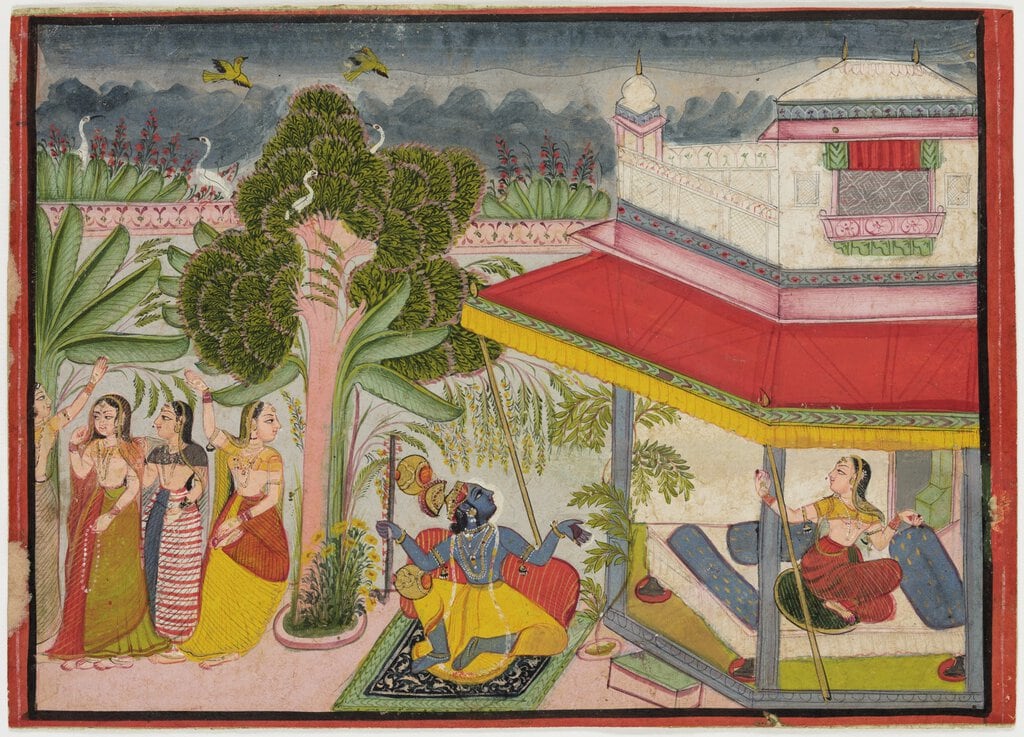
Furthermore, one cannot discuss Janmashtami without mentioning the legendary battle between Lord Krishna and Kamsa. After years of tyranny by Kamsa, Lord Krishna returns to Mathura to confront him. The epic duel ends with Krishna overpowering Kamsa and liberating Mathura from his oppressive rule. This story portrays Lord Krishna as a protector of righteousness and one who restores balance in the world.
In addition to these stories, there are numerous other tales associated with Janmashtami, each emphasizing different aspects of Lord Krishna’s divine persona. These include Krishna lifting Mount Govardhan to protect the villagers from torrential rain, his role as a charioteer and advisor to Arjuna in the Bhagavad Gita, and his rasleela (divine dance) with the gopis.
Overall, these mythological stories hold immense significance for devotees who celebrate Janmashtami. They serve as a reminder of Lord Krishna’s divine qualities, such as love, bravery, wisdom, and compassion. Through these narratives, individuals are inspired to emulate Krishna’s virtues in their own lives and deepen their devotion towards him.
| Mythological Stories | Significance |
|---|---|
| The story of Devaki and Vasudeva | Portrays love between mother and child; Lord Krishna’s divine protection |
| Krishna’s childhood pranks in Vrindavan | Demonstrates Krishna’s playful nature; attracts devotees through charm |
| Lord Krishna vs. Kamsa | Highlights Krishna as a protector of righteousness; restores balance |
| Krishna lifting Mount Govardhan | Showcases Krishna’s strength and ability to protect his devotees |
| Krishna as charioteer for Arjuna in the Bhagavad Gita | Emphasizes Krishna’s wisdom and guidance in times of moral dilemma |
| Krishna’s rasleela with the gopis | Represents divine love, devotion, and union with the divine |
The Symbolism of Lord Krishna and How it Relates to Janmashtami
In Hinduism, Lord Krishna holds a significant place as one of the most revered deities. His birth anniversary, known as Janmashtami, is a time when devotees celebrate his divine presence and teachings. This section delves into the symbolism of Lord Krishna and explores how it relates to the festivities of Janmashtami.
Lord Krishna is often depicted as a charming and playful child, radiating joy and love. He is regarded as the epitome of divinity, possessing qualities that invoke devotion and inspire righteous actions. Janmashtami serves as a reminder to followers to embrace these qualities in their own lives.
One of the most iconic symbols associated with Lord Krishna is the peacock feather adorning his crown or turban. This symbolizes beauty, grace, and transcendence. The vibrant colours of the peacock feather represent the diversity and richness of creation while reminding devotees to appreciate the inherent beauty in every aspect of life.
Another prominent symbol is Lord Krishna’s flute, or bansuri. The flute represents harmony and calls upon devotees to participate in a divine symphony by aligning their lives with righteousness and surrendering to a higher power. Just as Lord Krishna mesmerized all beings with his enchanting music, followers are urged to find joy in selfless service and devotion.
The cow is yet another powerful symbol associated with Lord Krishna. In Hindu culture, cows are considered sacred animals representing gentleness, nourishment, and abundance. Lord Krishna’s affinity for cows signifies his compassion for all living creatures and underscores the importance of treating them with respect and kindness.
Furthermore, Lord Krishna’s blue complexion holds great symbolism. It symbolizes transcendence from worldly attachments and represents absolute divinity that surpasses societal distinctions such as race or caste. The colour blue also evokes a sense of calmness, tranquillity, and infinity.
As Janmashtami approaches each year, devotees immerse themselves in understanding and embodying these symbols associated with Lord Krishna. Through various rituals, such as storytelling, singing devotional songs, and reenactments of Lord Krishna’s childhood pastimes (known as Raslila), participants engage in a deep contemplation of these symbolic representations.
They delve into the teachings and stories of Lord Krishna, seeking to grasp the profound wisdom hidden within. By imbibing the qualities represented by these symbols, devotees aim to cultivate a sense of love, joy, harmony, compassion, and transcendence in their lives. Overall, the symbolism of Lord Krishna enhances the spiritual significance of Janmashtami celebrations.
It reminds individuals to strive for spiritual growth and emulate the divine qualities exemplified by Lord Krishna. By embracing these symbols and incorporating them into their lives, devotees can forge a deeper connection with the divine and experience personal transformation.
| Symbol | Representation |
|---|---|
| Peacock Feather | Beauty, grace, diversity |
| Bansuri (Flute) | Harmony, divine symphony |
| Cow | Gentleness, nourishment |
| Skin complexion (Blue) | Transcendence from worldly attachments |
Understanding the Role of Lord Vishnu in Janmashtami Celebrations
Janmashtami, the auspicious Hindu festival celebrated in honour of Lord Krishna, holds great significance in Hinduism. This joyous occasion is not only a time of devotion and worship but also an opportunity for devotees to deepen their understanding of Lord Krishna’s divine presence in their lives. In order to understand Janmashtami fully, it is essential to explore the role of Lord Vishnu, one of the most revered deities in Hinduism, within its celebrations.
Lord Vishnu is considered the preserver and protector of the universe in Hindu mythology. He is believed to have manifested on Earth in various forms or avatars to restore balance and righteousness. Among these avatars, Lord Krishna is the eighth incarnation and holds a special place in people’s hearts during Janmashtami festivities.
During Janmashtami, Lord Krishna’s birth anniversary is celebrated with great devotion and reverence. Devotees believe that by worshipping Lord Krishna, they are indirectly worshipping Lord Vishnu himself. This deepens their bond with both deities and strengthens their faith.
In many households and temples, an elaborate puja (worship) ceremony is conducted on Janmashtami to honour Lord Vishnu’s presence through his avatar, Lord Krishna. The puja typically involves offerings of flowers, fruits, incense sticks, and sacred chants dedicated to Lord Vishnu.
Another important aspect of Janmashtami celebrations that highlights the role of Lord Vishnu is the recitation of bhajans (devotional songs), and religious discourses centered around his divine glory. These activities serve as reminders for devotees to reflect on the teachings imparted by both deities, ultimately guiding them towards spirituality.
Furthermore, some devotees engage in fasting throughout the day as a mark of reverence for both Lord Krishna and Lord Vishnu. Fasting is believed to purify the body and mind while enhancing spiritual growth. It serves as a reminder to devotees that they should aspire to embody the virtues and qualities personified by Lord Krishna and Lord Vishnu in their own lives.
Janmashtami celebrations also include various cultural performances, such as dance dramas and plays depicting the life of Lord Krishna. These artistic representations not only entertain but also educate individuals about the profound connection between Lord Krishna and Lord Vishnu, showcasing their divine interventions for the betterment of humanity.
The Different Rituals and Traditions Observed during Janmashtami
Janmashtami, one of the most important festivals in Hinduism, is celebrated with great enthusiasm and devotion. This sacred occasion is marked by a variety of rituals and traditions that hold deep significance for the followers of Lord Krishna. These practices aim to evoke spiritual awakening and foster a sense of unity among devotees. From fasting to performing puja, Janmashtami rituals bring people closer to Lord Krishna and promote a profound connection with the divine.
One of the main rituals observed during Janmashtami is the chanting of bhajans (devotional songs) and kirtans (religious hymns) in praise of Lord Krishna. Devotees gather at temples or in their homes to sing these melodious songs that celebrate the life and teachings of Krishna. The soul-stirring music creates an atmosphere of spirituality, filling hearts with devotion and love for the beloved deity.
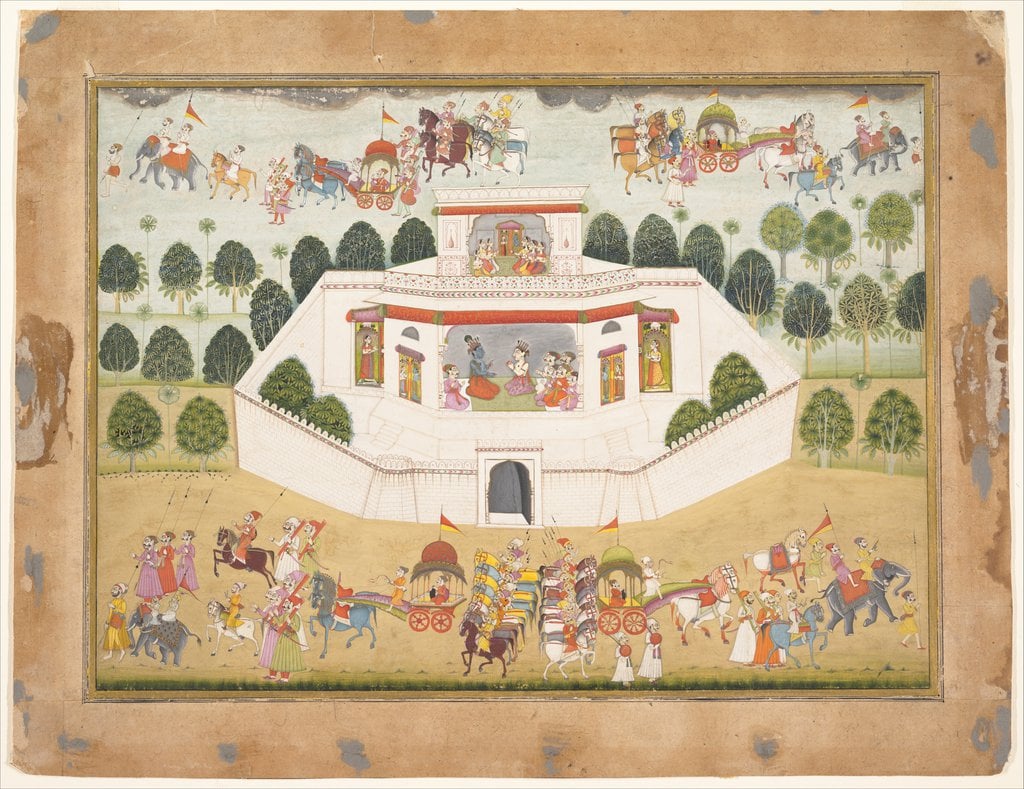
Another significant tradition during Janmashtami is the decoration of cradles or swings (jhulas), symbolizing Lord Krishna’s birthplace. These decorated jhulas are adorned with flowers, leaves, and ornaments to recreate the ambience of Gokul, where Lord Krishna spent his childhood. Devotees take turns swinging baby idols of Krishna in cradles while singing devotional songs, immersing themselves in the blissful joy associated with his divine presence.
Janmashtami celebrations also include colourful processions known as ‘Shobha yatras’ that depict various stages from Lord Krishna’s life. These processions often feature vibrant costumes, props, traditional dances like Raas Leela (dance depicting love stories associated with Krishna), and enactment of scenes from mythology related to Krishna’s childhood episodes such as ‘Krishna stealing butter’ or ‘Killing Kansa’. These spectacular displays serve as a visual tribute to Lord Krishna’s extraordinary persona.
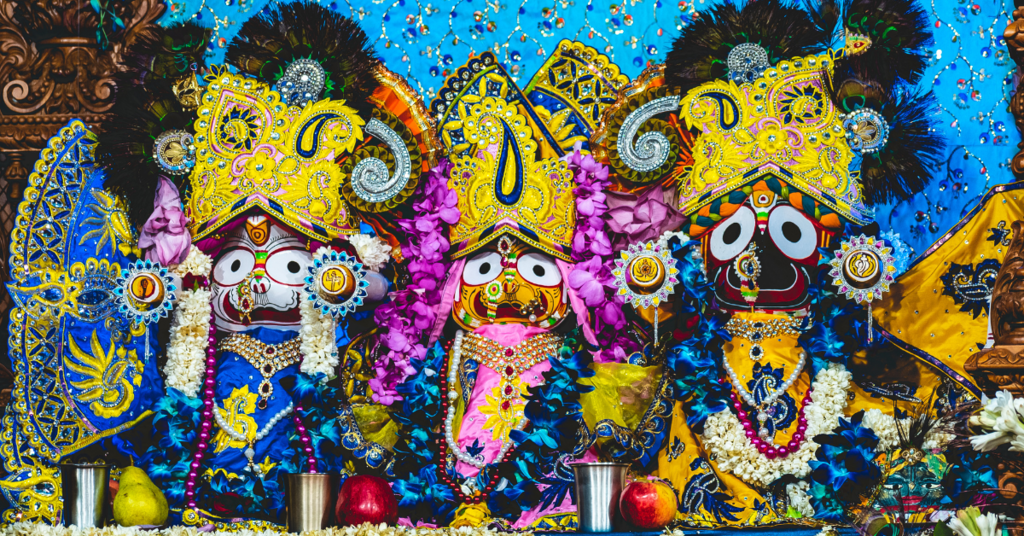
Devotees also observe fasting on Janmashtami as a means to purify the mind and body for spiritual worship. The fasting typically lasts for 24 hours, starting from the previous day’s night until the midnight of Janmashtami. During this period, devotees abstain from consuming grains and non-vegetarian food and adhere to a simple diet consisting of fruits, milk, yoghurt, and other vegetarian delicacies prepared as an offering for Lord Krishna.
The highlight of Janmashtami rituals is the midnight puja (arti) performed at temples to commemorate Lord Krishna’s birth moment. Amidst chants of mantras and the blowing of conch shells, priests perform elaborate rituals while devotees gather in large numbers to witness this sacred ceremony. This auspicious puja signifies the divine intervention of Lord Krishna in one’s life and seeks his blessings for a prosperous future.
| Rituals | Description |
|---|---|
| Chanting Bhajans and Kirtans | Devotional singing to glorify Lord Krishna |
| Decorating Cradles or Swings (Jhulas) | Symbolizes Lord Krishna’s birthplace |
| ‘Shobha Yatras’ (Colorful Processions) | Depicts various stages of Lord Krishna’s life |
| Fasting on Janmashtami | Purification through abstinence from grains & non-veg food |
| Midnight Puja (Arti) | Elaborate ceremony to commemorate Lord Krishna’s birth moment |
These rituals and traditions stand as a testament to the deep devotion and love for Lord Krishna that permeates Janmashtami celebrations. By participating in these practices, devotees not only honour their beloved deity but also draw closer to their spiritual essence, fostering unity and a sense of divine connection among individuals.
A Detailed Guide to the Fasting Practices Followed on Janmashtami
Janmashtami is a significant Hindu festival celebrated with great devotion and enthusiasm. One of the key aspects of this auspicious occasion is the observance of fasting practices, which hold immense spiritual and religious significance. Fasting on Janmashtami is believed to purify the mind, body, and soul, allowing devotees to establish a deeper connection with Lord Krishna.
Fasting during Janmashtami involves abstaining from consuming any form of solid food for the entire day until midnight, when Lord Krishna is believed to have been born. However, liquids like water, fruit juices, milk, tea, coffee, and buttermilk are allowed during the fasting period. This kind of fasting is known as ‘Nirjala Vrat,’ meaning fasting without water.
Devotees who observe the fast wake up early in the morning and take a ritualistic bath to prepare themselves for this sacred practice. They then spend their day devotedly chanting mantras, reading religious scriptures such as the Bhagavad Gita or Srimad Bhagavatam, and engaging in prayer and meditation. It is believed that these activities help purify the mind and enhance spirituality.
To break their fast at midnight when Lord Krishna was born, devotees enjoy a grand feast known as ‘Nanda Utsav.’ This feast includes various delicious dishes that are specifically prepared for Janmashtami. The most popular dish prepared on this occasion is ‘Makhan-Mishri,’ which consists of butter mixed with sugar or jaggery.
Apart from observing Nirjala Vrat, some devotees choose to follow partial fasting on Janmashtami. This involves only consuming fruits, soaked nuts, dairy products like yoghurt and cottage cheese (paneer), and beverages like milkshakes or fruit juices throughout the day until they break their fast at midnight.
It is important to note that while fasting on Janmashtami holds great religious significance, it is not mandatory for everyone to observe the fast. Pregnant women, young children, elderly individuals, and those who are not in good health are exempted from fasting. They can still participate in the celebrations by opting for lighter meals or offering prayers and performing rituals with dedication.
Overall, the fasting practices followed on Janmashtami play a crucial role in strengthening one’s devotion to Lord Krishna. It is a way for devotees to exhibit self-control and discipline while seeking the blessings of Lord Krishna. Whether observing Nirjala Vrat or partial fasting, this sacred practice allows individuals to connect with their spirituality and experience the divine presence of Lord Krishna during this festive occasion.
Celebrating Janmashtami
Janmashtami is a festival that holds immense significance in Hinduism and is celebrated with great fervour and devotion. One of the major highlights of Janmashtami is the performance of the auspicious puja (worship) and aarti (ritual of worship using light) dedicated to Lord Krishna.
The puja and aarti play a central role in Janmashtami celebrations, as they allow devotees to express their love, respect, and devotion towards Lord Krishna. The puja typically involves preparing a special altar or mandap adorned with flowers, pictures or idols of Lord Krishna, and other divine symbols. Devotees clean their homes and decorate them with flower garlands to welcome Lord Krishna’s presence.
During the puja, various rituals are performed to honour Lord Krishna. These rituals may include offering fresh fruits, sweets, and traditional delicacies to the deity as a symbol of love and gratitude. Milk and milk products hold a significant place during this festival due to their association with Lord Krishna’s childhood as a cowherd.
Devotees also chant mantras, sing devotional songs called bhajans, recite prayers from sacred texts like the Bhagavad Gita or Vishnu Sahasranama, and perform arati. Arati is a ritual where devotees wave oil lamps or camphor flames in front of the deity while singing hymns or mantras praising Lord Krishna.
The arti ceremony is believed to purify the atmosphere by warding off negative energies and inviting positive vibrations. It is accompanied by rhythmic bell ringing, clapping, and blowing conch shells as expressions of joyous celebration.
The house where the puja takes place is often filled with an ambience of spirituality as family members gather together to participate in these customs. The elders guide the younger ones on conducting the puja rituals correctly while explaining its significance. This creates an atmosphere of unity among family members and helps to cultivate a sense of devotion and reverence towards Lord Krishna.
Apart from the puja and aarti at home, many temples dedicated to Lord Krishna also organize elaborate ceremonies for Janmashtami. Devotees visit these temples to seek the blessings of Lord Krishna and participate in the grand festivities. These temple celebrations include vibrant processions, devotional singing, dances honouring Lord Krishna’s playful nature, and theatrical performances depicting his life events.
The Significance of Dahi Handi Celebrations during Janmashtami
Dahi Handi is a popular and exciting tradition that is an integral part of Janmashtami celebrations. It involves the formation of human pyramids to reach and break a pot filled with curd, which is tied at a significant height. The significance of Dahi Handi celebrations lies in their connection to the legend of Lord Krishna and the playful nature of his childhood.
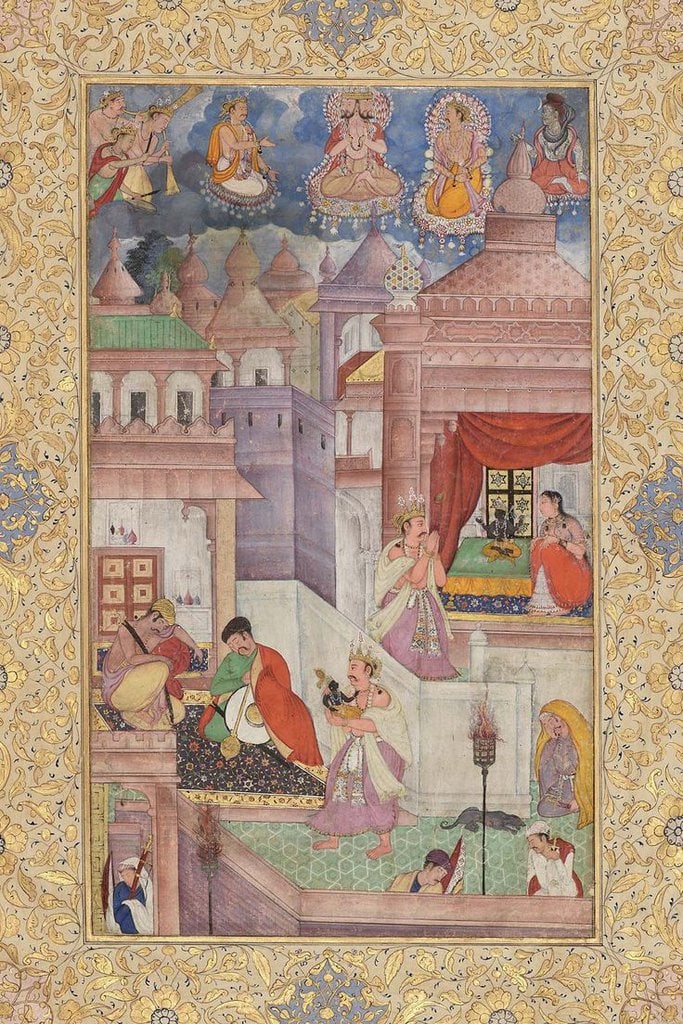
The Legend behind Dahi Handi
According to Hindu mythology, Lord Krishna was notorious for his love for butter and curd. He would often steal it from his mother’s kitchen or from neighbouring houses. To prevent him from doing so, the women in Vrindavan started hanging jars of curd out of their reach. However, little Krishna was determined and devised a plan with his friends to form human pyramids and reach these pots, successfully breaking them open to enjoy the delicious curd.
Based on this legend, Dahi Handi became a popular tradition during Janmashtami. It symbolizes the playful nature and mischievousness of Lord Krishna as he engaged in various antics during his childhood. The act of breaking the pot filled with curd represents victory over obstacles and also signifies the breaking of one’s ego.
The Rituals During Dahi Handi Celebrations
Dahi Handi celebrations usually take place on the second day of Janmashtami, known as “Nanda Utsav.” In different parts of India, especially Maharashtra, Gujarat, and Goa, people come together to organize Dahi Handi events with great enthusiasm. These events are called “Dahi Handi competitions”, where teams compete against each other to break the pot containing dahi.
The pot used for Dahi Handi is traditionally called “Handi,” which is a small earthenware vessel decorated with vibrant colours and flowers. This Handi is then hung at a substantial height using ropes, symbolizing the effort required to reach divine blessings. Participants in Dahi Handi competitions form human pyramids, with a strong base of individuals forming the foundation, while others climb up to break the Handi.
The Joy and Excitement of Dahi Handi
Dahi Handi celebrations are filled with joy, enthusiasm, and fervour. The atmosphere is charged with energy as participants chant devotional songs and encourage each other to reach for the Handi. The human pyramids formed showcase teamwork, coordination, and trust among the participants. Young boys and men participate eagerly, exhibiting their strength and agility during the event.
Besides being a religious ritual, Dahi Handi also promotes unity and camaraderie among communities. People from diverse backgrounds come together to organize and take part in these events, transcending boundaries of caste, creed, and social status. It fosters a spirit of equality where everyone is treated equally regardless of their background.
The Message Behind Dahi Handi Celebrations
Dahi Handi celebrations carry a deeper message beyond the festivity and excitement. It teaches us about perseverance, determination, teamwork, and overcoming obstacles, just as Lord Krishna did during his childhood. This tradition urges us to embrace challenges that come our way and find innovative ways to overcome them without losing sight of our goals.
Dahi Handi celebrations during Janmashtami hold immense significance in Hindu culture. It not only celebrates Lord Krishna’s mischievous nature but also teaches important life lessons about dedication and camaraderie. By participating in or witnessing this ancient tradition, devotees are immersed in devotion while experiencing unity with fellow celebrants on this joyous occasion.
The Global Impact of Janmashtami Celebrations and its Unifying Spirit
Janmashtami, one of the most significant festivals in Hinduism, not only holds immense cultural and religious importance in India but also has a global impact. The festivities associated with this auspicious occasion have spread far beyond the borders of India, uniting people from different backgrounds and nationalities in their devotion to Lord Krishna.
Spreading the Message of Love and Unity
One of the reasons behind Janmashtami’s global impact is its powerful message of love and unity. Lord Krishna, considered the eighth avatar of Lord Vishnu, is revered as a symbol of love, compassion, and harmony. His teachings in the Bhagavad Gita resonate with people across cultures and religions, emphasizing the values of righteousness and selfless action.
The significance of Janmashtami lies in its ability to transcend boundaries and bring together people from all walks of life. Regardless of nationality or belief system, devotees unite in their admiration for Lord Krishna, celebrating his divine essence that surpasses any divisions.
Janmashtami Celebrations Around the World
Janmashtami celebrations take place in various countries around the world where Hindu communities reside. These celebrations are characterized by vibrant colours, devotional singing and dancing (bhajans), theatrical performances depicting episodes from Lord Krishna’s life (Krishna Leela), and grand processions (Rath Yatra).
In cities like London, New York, Sydney, or Johannesburg, one can witness extravagant Janmashtami festivals that attract thousands of attendees each year. Temples beautifully adorned with flowers and lights create a festive atmosphere as devotees come together to offer prayers and seek blessings from Lord Krishna.
Cultural Exchange and Interfaith Dialogue
Janmashtami celebrations open doors for cultural exchanges between members of different communities. Non-Hindus are often invited to participate in the festivities, fostering mutual understanding and promoting interfaith dialogue. This interaction provides an opportunity for individuals to gain a deeper appreciation of Hindu traditions and beliefs.
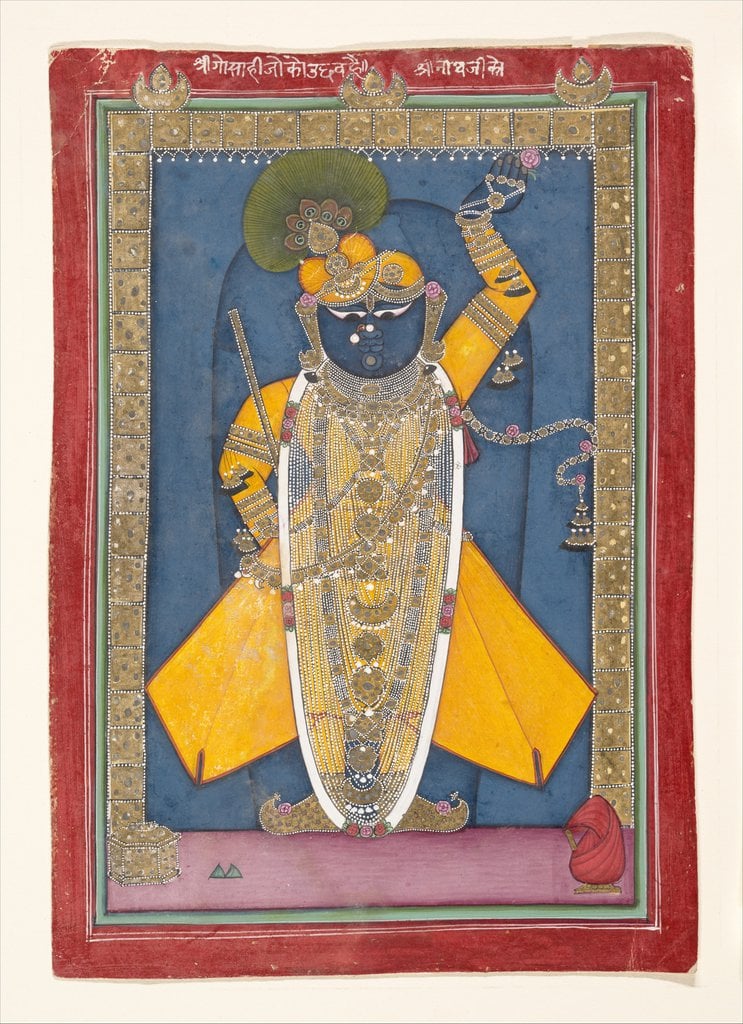
Through events such as exhibitions, workshops, and cultural programs, people from diverse backgrounds get to experience the richness of Janmashtami customs, enhancing cultural awareness and building bridges between communities. These initiatives showcase the universal values that Janmashtami represents and promote harmonious coexistence.
Virtual Connectivity
With advancements in technology, Janmashtami celebrations have transcended physical boundaries through virtual platforms. This has allowed devotees worldwide to connect with one another and partake in the festivities remotely. Online darshans (virtual views of Lord Krishna’s deity), live streaming of prayers and performances, and interactive virtual gatherings enable global participation and engagement.
This digital connectivity has not only brought Hindus living abroad closer to their roots but has also sparked interest among those unfamiliar with the festival. People from different cultural backgrounds can now witness the grandeur of Janmashtami celebrations firsthand, fostering a sense of unity among global audiences.
Janmashtami’s global impact serves as a testament to its ability to transcend geographical borders and unite people through devotion to Lord Krishna. It stands as a symbol of shared values, love, and harmony that resonate across cultures worldwide. As the festival continues to grow in popularity, its unifying spirit reinforces the belief that diversity can indeed bring people together in celebration of our shared humanity.
Looking Ahead
As we conclude our exploration of Janmashtami, its history, rituals, and significance in Hinduism, it is only fitting to look ahead to any future anticipated festivities of Janmashtami. This sacred festival holds a special place in the hearts of millions around the world and serves as a unifying force that transcends geographical boundaries.
Janmashtami is always eagerly awaited by devotees who are excited to immerse themselves in the joyous celebrations once again and express their devotion to Lord Krishna. As the auspicious day approaches, preparations begin in full swing, with devotees decorating temples, homes, and public spaces with vibrant colours and intricate designs. The atmosphere becomes charged with anticipation as people come together to celebrate the birth anniversary of Lord Krishna.
During Janmashtami, communities organize spiritual gatherings and cultural events that showcase the rich tradition and mythology associated with Lord Krishna. Devotees will participate in bhajans (devotional songs) and kirtans (chanting) that fill the air with melodious tunes glorifying the divine virtues of Lord Krishna. These devotional activities create an ambience of spirituality and allow individuals to connect deeply with their faith.
One of the most anticipated aspects of Janmashtami is the grand midnight procession or ‘Shobha Yatra’ held in various parts of India and across the globe. Devotees come together to enthusiastically participate in these processions, carrying beautifully adorned palanquins with images or idols of baby Krishna. The streets resonate with chants and prayers as people revel in the divinity surrounding them.
The highlight of Janmashtami 2023 will undoubtedly be the Dahi Handi celebrations. This exhilarating event involves forming towering human pyramids to reach a suspended pot containing curd or butter – a favourite treat of Lord Krishna during his childhood days. These competitions symbolize Krishna’s mischievous nature as he would steal butter from the pots hung high above. The enthusiasm and energy displayed during the Dahi Handi celebrations are truly infectious and create an atmosphere of camaraderie and fun.
In conclusion, Janmashtami holds immense significance in Hinduism as devotees rejoice in celebrating Lord Krishna’s birth anniversary. With Janmashtami 2023 just around the corner, excitement fills the air as preparations commence for a grand celebration filled with devotion, music, dance, and joy.
As we eagerly await this sacred festival, let us keep in mind the virtues that Lord Krishna embodies and strive to incorporate them into our lives, fostering love, compassion, and spiritual enlightenment. May Janmashtami 2023 be a time for inner reflection, spiritual growth, and unity among all beings.
Frequently Asked Questions
What is the real date of Janmashtami?
The real date of Janmashtami is determined based on the Hindu lunar calendar. As per the calculations, Janmashtami is expected to fall on 6-7th September in 2023 and 26-27th August 2024.
When to do Janmashtami fast?
The fast for Janmashtami is observed by devotees to pay homage to Lord Krishna. It is customary to observe a full-day fast, which begins at sunrise and continues until the following day’s sunrise. This period of fasting symbolizes devotion and self-control, allowing individuals to connect with Lord Krishna spiritually.
How many days is Krishna Janmashtami?
Krishna Janmashtami spans a two-day period filled with festivities and prayers. The celebration commences on Tuesday evening and carries on till late-night hours as it marks the birth anniversary of Lord Krishna. Devotees engage in various rituals, sing devotional songs, and participate in dance performances during these two days.
When was Krishna born?
As per Hindu mythology and scriptures, Lord Krishna is believed to be born during midnight hours on the eighth day of the dark fortnight in the month of Bhadrapada (Krishna Paksha Ashtami), which typically falls around August or September according to the Gregorian calendar.
